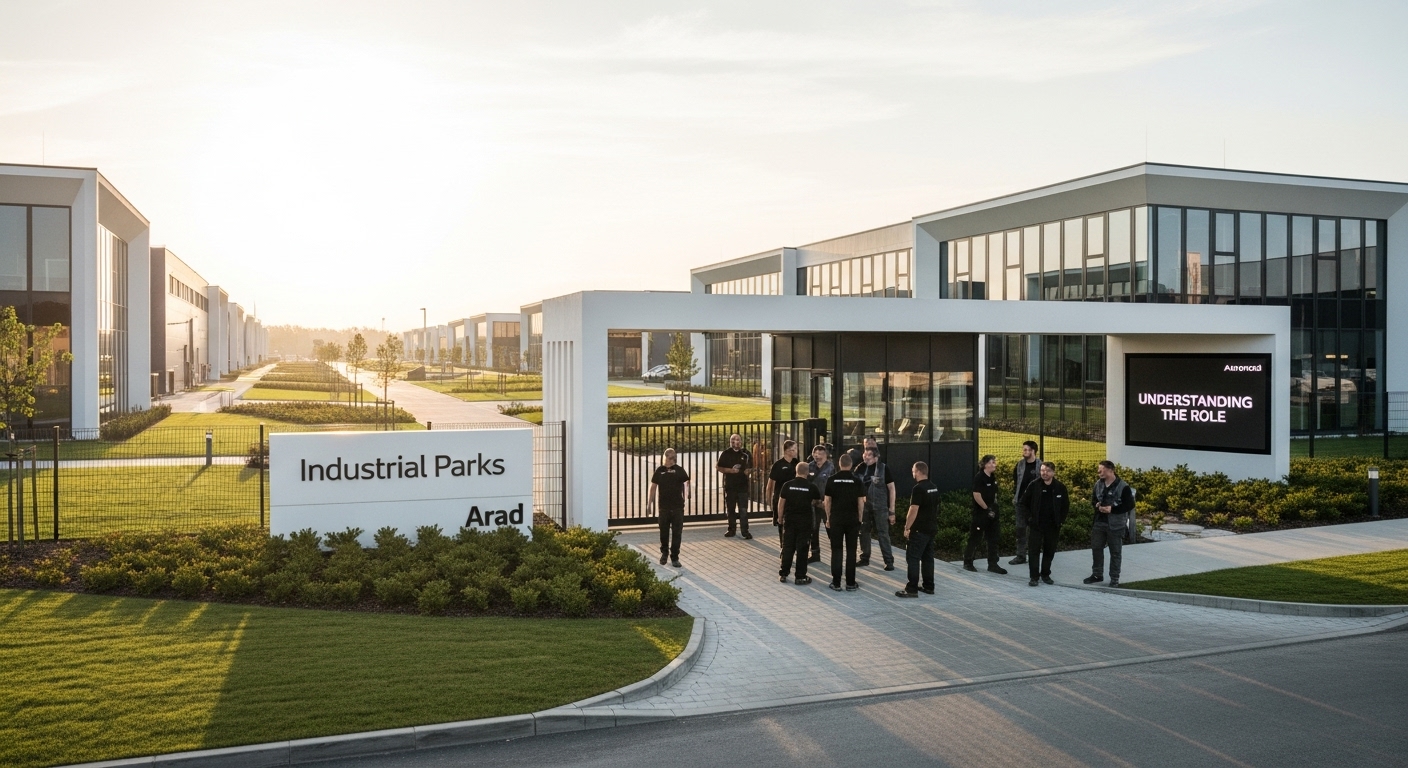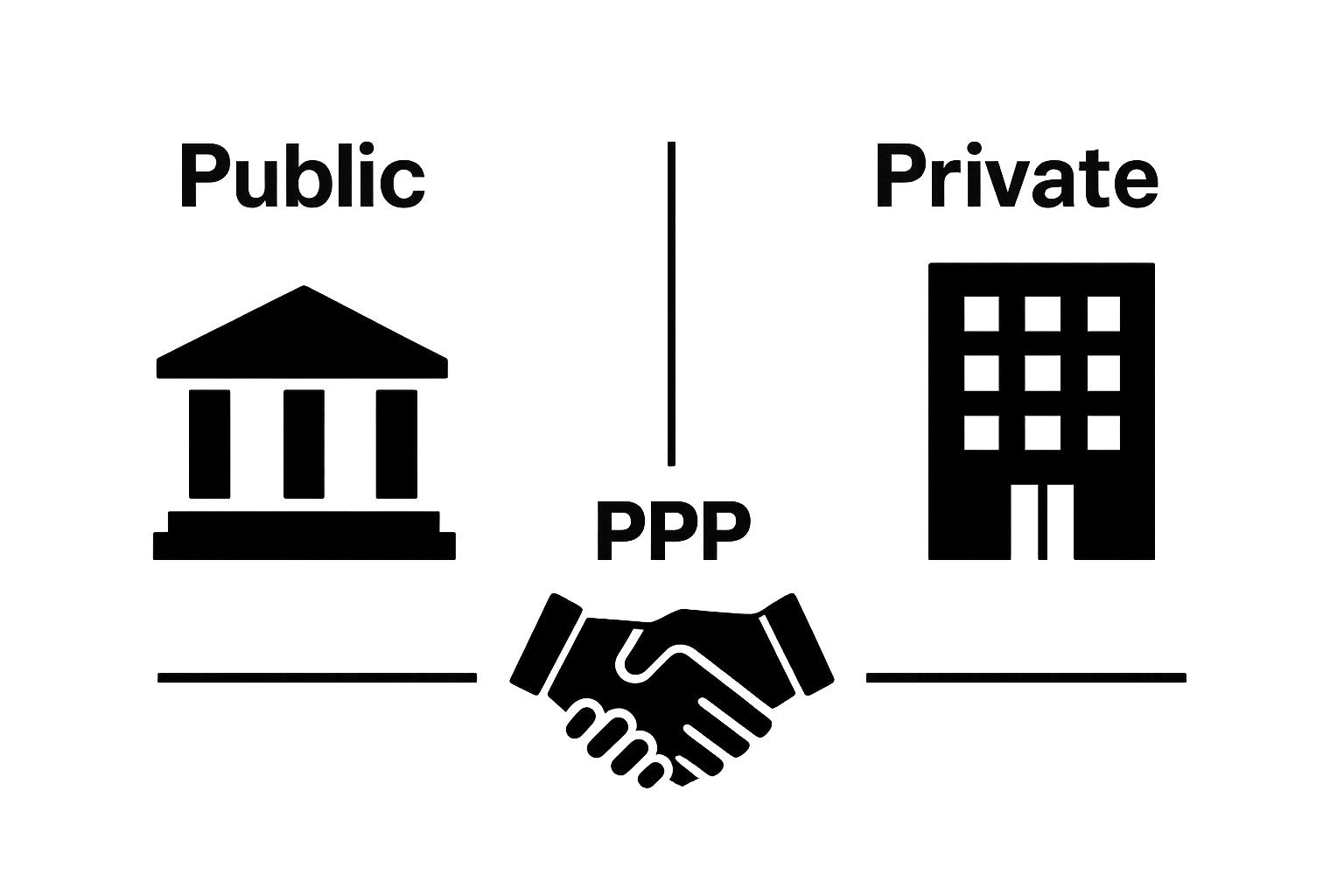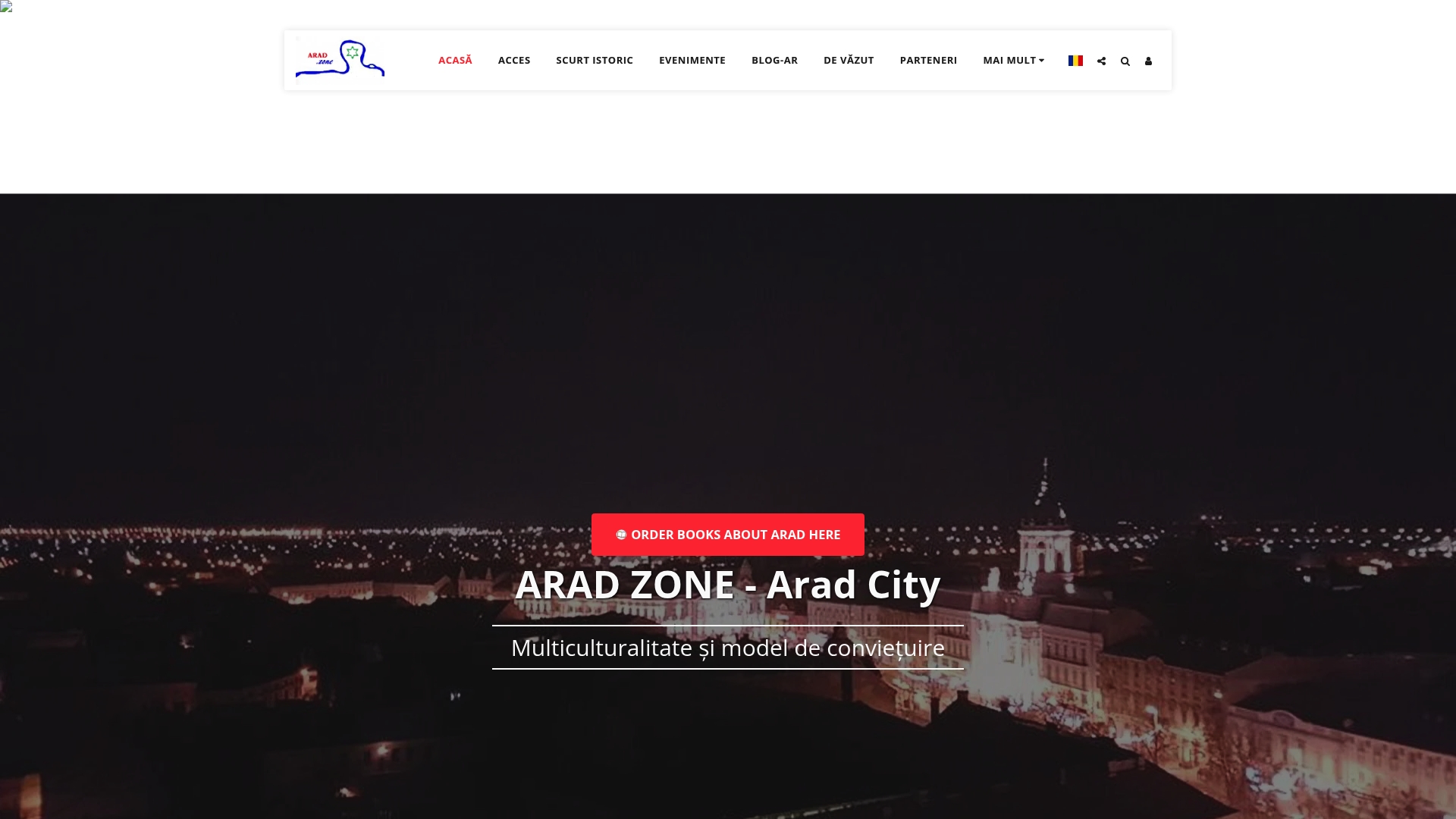Understanding the Role of Industrial Parks in Arad
- Arad Zone
- Sep 24
- 8 min read

Industrial parks might sound like giant grids packed with factories and warehouses. But pause a second. Nearly 30 percent of industrial employment in emerging countries now comes from these zones, according to World Bank research. Most people picture them as simple land plots with fences, yet these areas work more like thriving ecosystems, each one sparking economic growth in ways that rarely make the headlines.
Table of Contents
Quick Summary
Takeaway | Explanation |
Industrial parks boost economic development. | They strategically concentrate industries, enhancing productivity and attracting investments. |
Job creation is a primary benefit. | Industrial parks generate direct and indirect jobs, supporting workforce development through training programs. |
Infrastructure is critical to operation. | Essential utilities, transportation networks, and technological resources enable efficient industrial activities. |
Governance models ensure smooth operations. | Robust management and compliance systems are vital for maintaining high operational standards in industrial parks. |
Sustainable practices are central to development. | Modern parks integrate eco-friendly practices and resource management to promote environmentally conscious industrial growth. |
What are Industrial Parks and Their Types?
Industrial parks represent strategically planned areas designed to concentrate industrial and commercial infrastructure in a dedicated location. These complex economic zones serve as crucial platforms for manufacturing, research, and business development, offering specialized environments that support economic growth and technological advancement.
Understanding Industrial Park Configurations
Industrial parks are not uniform spaces but rather sophisticated ecosystems with distinct characteristics. According to the OECD, these zones can be categorized across multiple dimensions:
Public sector managed parks
Private sector developed parks
Public-private partnership models
Technology and science parks
Specialized industrial districts
Each configuration provides unique advantages for businesses, regional economies, and infrastructure development. Public parks often prioritize broader economic development goals, while private parks tend to focus on specific industry sector needs.
Below is a table comparing the main types of industrial park configurations discussed in the article, summarizing their management structure and core focus areas for easy reference.
Type of Industrial Park | Management Structure | Core Focus |
Public Sector Managed | Government | Broad economic development goals |
Private Sector Developed | Private companies | Targeted industry sector needs |
Public-Private Partnership Models | Joint public/private | Blended investment and shared responsibilities |
Technology and Science Parks | Public or private, sector-specific | Research, innovation, technology advancement |
Specialized Industrial Districts | Sector associations/private | Niche industrial or sectoral clustering |

Economic and Infrastructural Significance
The role of industrial parks extends far beyond simple land allocation. These zones represent comprehensive economic strategies that integrate multiple critical elements:
Shared infrastructure and utilities
Coordinated transportation networks
Streamlined regulatory environments
Potential tax and investment incentives
Clustered industry collaboration opportunities
By consolidating industrial activities, these parks create synergistic environments where businesses can reduce operational costs, enhance productivity, and accelerate innovation. They serve as catalysts for regional economic transformation, attracting investments and supporting sustainable industrial development.
Moreover, industrial parks provide structured frameworks that help governments and businesses manage complex industrial ecosystems more effectively. They offer controlled, planned spaces where environmental regulations, safety standards, and economic objectives can be harmoniously integrated.
Why Industrial Parks Matter to Economic Growth
Industrial parks play a pivotal role in driving regional and national economic development, transforming local landscapes into powerful engines of productivity and innovation. These specialized zones are not merely geographic locations but strategic mechanisms for stimulating economic growth, attracting investments, and creating sustainable employment opportunities.
Job Creation and Workforce Development
One of the most significant contributions of industrial parks is their capacity to generate employment across multiple skill levels. According to World Bank research, these zones create comprehensive employment ecosystems that benefit both skilled professionals and entry-level workers:
Direct employment within park facilities
Indirect job opportunities in supporting industries
Skill development through specialized training programs
Enhanced local workforce capabilities
Attraction of high-quality employers
By concentrating industrial activities, these parks become magnets for talent, enabling regions to develop robust professional networks and specialized labor markets that drive long-term economic resilience.
Investment and Economic Competitiveness
Industrial parks serve as critical platforms for attracting domestic and international investments. They provide streamlined infrastructure, reduced administrative barriers, and attractive economic incentives that make regions more competitive in the global marketplace. These zones demonstrate a region’s commitment to economic development by offering:
Pre-developed industrial infrastructure
Simplified regulatory environments
Potential tax and financial incentives
Integrated logistics and transportation networks
Shared technological and research facilities
The strategic design of industrial parks transforms them from mere physical spaces into sophisticated economic instruments that signal a region’s readiness for advanced industrial development. They represent sophisticated mechanisms for translating economic potential into tangible growth, creating environments where businesses can thrive and innovate with reduced operational complexities.
How Industrial Parks Function and Operate
Industrial parks represent complex ecosystems with intricate operational frameworks that go far beyond simple land allocation. These sophisticated environments require meticulous planning, strategic management, and comprehensive infrastructure to facilitate seamless industrial activities and economic development.
Governance and Management Structures
The operational success of industrial parks hinges on robust governance models that coordinate multiple stakeholders and administrative processes. According to research from IndustryScopeKG, these zones employ advanced management strategies to ensure efficient functionality:
Centralized administrative oversight
Clear regulatory compliance mechanisms
Integrated infrastructure management
Standardized operational protocols
Strategic resource allocation systems
Effective governance ensures that industrial parks maintain high operational standards while providing businesses with flexible, supportive environments that adapt to evolving economic landscapes.
Infrastructure and Technological Integration
At the core of industrial park operations lies a sophisticated infrastructure network designed to support diverse industrial activities. These zones are engineered to provide comprehensive technological and logistical support:
Advanced utility distribution systems
High-speed digital communication networks
Shared research and development facilities
Integrated transportation and logistics infrastructure
Sustainable energy and resource management solutions
The technological backbone of industrial parks enables businesses to operate with enhanced efficiency, reduced operational costs, and minimal infrastructural barriers.
By centralizing critical resources and technological capabilities, these zones create ecosystems where innovation and productivity can flourish simultaneously.
Moreover, modern industrial parks increasingly leverage data analytics and smart technologies to optimize their operational processes, ensuring continuous improvement and adaptability in a rapidly changing economic environment.
Key Concepts Behind Industrial Park Development
Industrial park development represents a sophisticated approach to urban and economic planning, integrating complex spatial, economic, and environmental considerations. These strategic zones are meticulously designed to transform raw landscapes into dynamic economic ecosystems that support sustainable industrial growth and regional development.
Strategic Planning and Spatial Design
The foundation of industrial park development lies in comprehensive strategic planning that goes beyond traditional land allocation. According to the United Nations Industrial Development Organization, effective industrial park development requires:
Holistic spatial analysis
Comprehensive infrastructure mapping
Environmental sustainability considerations
Economic potential assessment
Long-term regional development strategies
This multifaceted approach ensures that industrial parks are not merely physical spaces but integrated economic platforms that can adapt to changing industrial landscapes and technological advancements.
Sustainable Development and Resource Integration
Modern industrial park development emphasizes sustainable practices and resource optimization. These zones are designed to create symbiotic industrial ecosystems where businesses can maximize efficiency and minimize environmental impact:
Integrated waste management systems
Shared energy infrastructure
Circular economy principles
Resource recovery and recycling mechanisms
Collaborative environmental management
By promoting interconnected industrial processes, these parks transform traditional industrial models into sophisticated, environmentally conscious economic zones. They represent innovative approaches to balancing economic growth with ecological responsibility, creating spaces where industrial productivity and environmental stewardship coexist harmoniously.
The conceptual framework of industrial park development continues to evolve, reflecting broader shifts in economic planning, technological innovation, and sustainable development strategies.
Real-World Examples of Industrial Parks in Arad
Arad has emerged as a significant hub for industrial park development, leveraging its strategic geographic location and robust infrastructure to attract diverse industrial investments. These industrial zones represent critical platforms for economic transformation, showcasing the city’s commitment to sustainable economic growth. Understanding economic development in Arad provides additional context to this dynamic landscape.
Strategic Industrial Zones
The industrial parks in Arad demonstrate sophisticated approaches to economic development. According to CTP’s development reports, key industrial parks in the region include:
CTPark Arad West
Industra Park Arad
Automotive and logistics-focused industrial complexes
Technology and manufacturing clusters
Multimodal transportation-integrated zones
These parks are strategically positioned near major transportation corridors, including the A1 motorway, which enhances their connectivity and attractiveness for national and international businesses.
Sectoral Diversity and Investment Landscape
Arad’s industrial parks showcase remarkable sectoral diversity, attracting investments across multiple domains. Crane ChemPharma & Energy’s recent investment exemplifies the region’s multifaceted industrial ecosystem:
Chemical and pharmaceutical manufacturing
Automotive components production
Logistics and distribution centers
Advanced manufacturing technologies
Sustainable energy infrastructure projects
The industrial parks offer flexible spaces ranging from 500 to 15,000 square meters, accommodating businesses of various scales and enabling a dynamic, adaptable economic environment. This approach demonstrates Arad’s sophisticated strategy for attracting and supporting diverse industrial investments.
This table presents a clear summary of Arad Industrial Park sectors and their primary investment focuses, helping readers quickly understand the diversity present in Arad’s industrial ecosystem.
Sector | Example Focus Area |
Chemical and Pharmaceutical Manufacturing | Production of chemicals, pharmaceuticals |
Automotive Components Production | Manufacturing of parts for auto industry |
Logistics and Distribution Centers | Warehousing, product distribution |
Advanced Manufacturing Technologies | High-tech, precision manufacturing |
Sustainable Energy Infrastructure Projects | Renewable energy, eco-friendly utilities |

Explore Arad’s Industrial Growth and Uncover New Opportunities
Have you ever wondered how industrial parks shape local economies and drive real transformation in a city like Arad? The article highlights how industrial parks in Arad create powerful business ecosystems with streamlined infrastructure, smart planning, and unique spaces for innovation. If you are aiming to access these benefits, from cutting operational costs to building strategic connections, you might feel overwhelmed by where to start or how to tap into real opportunities.

Discover how you can connect with Arad’s vibrant industrial zones and rich multicultural heritage by exploring Arad.zone. This is your entryway to the latest insights, case studies, and inspiring stories from one of Central Europe’s hidden gems. Learn more about the region’s unique advantages and see how these thriving parks can help you grow or invest with confidence. Visit our homepage now to start your journey into a new era of industrial development in Arad. Miss out today, and you could delay your access to tomorrow’s economic success.
Frequently Asked Questions
What are industrial parks?
Industrial parks are strategically planned areas designed to concentrate industrial and commercial infrastructure, providing a supportive environment for manufacturing, research, and business development.
How do industrial parks contribute to economic growth?
Industrial parks stimulate economic growth by attracting investments, generating jobs, and creating specialized ecosystems that enhance productivity and innovation.
What types of businesses can benefit from industrial parks?
Businesses in various sectors, including manufacturing, logistics, technology, and pharmaceuticals, can benefit from the shared infrastructure and resources available in industrial parks.
What role do regulations play in the management of industrial parks?
Regulations ensure that industrial parks operate effectively by establishing compliance mechanisms, maintaining operational standards, and fostering an environment that supports economic objectives.
Recommended




Comments